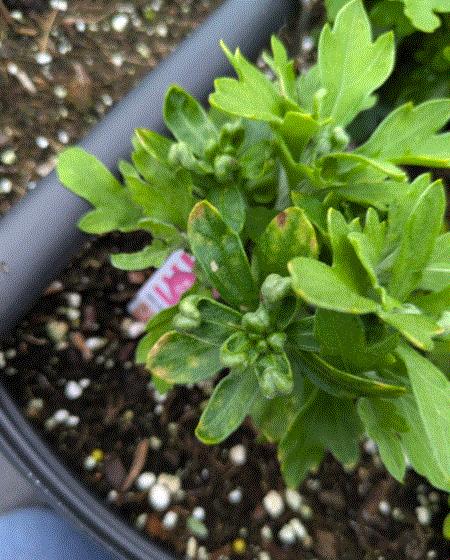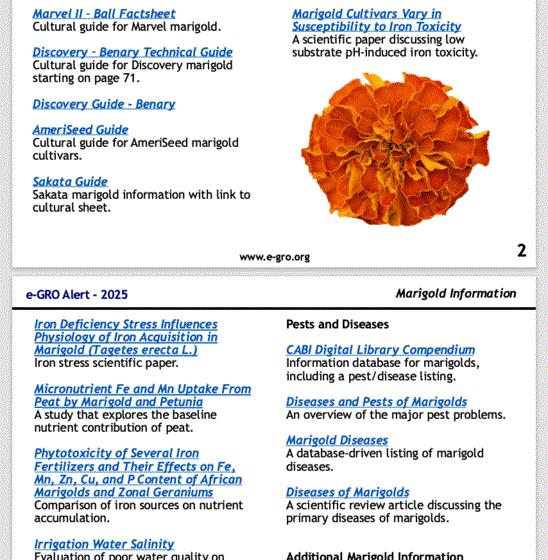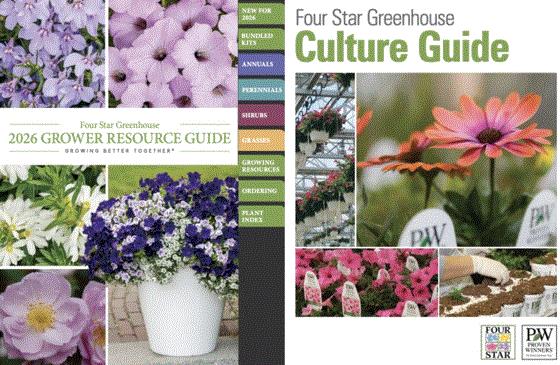3 NEW AUDIO FILES! Hiring, Trialing, Upgrading
A little more than one year ago, I pitched the idea to start reading and recording GrowerTalks, Green Profit and Inside Grower articles for the Tech On Demand podcast. Personally, I prefer paper books to audio books, but with more than half the U.S. population listening to recorded books (including my wife, who probably averages a book a week), I was well aware of the popularity of the genre.
So I decided to just do it ... and now there are now almost 70 articles available in the Tech On Demand archive, and the numbers show that many of you are tuning in. So I shall continue. I actually love recording them and do my best to pick topics that are timely, relevant and interesting.

Three new Audio Files episodes have dropped in the past couple weeks. You can click the links below to listen on Apple Podcasts or you can subscribe on Spotify or most of the other major podcast apps so you never miss an episode.
EXCERPT: When it comes to lowering operating costs for controlled environment growers, energy and labor are top of mind. The cost of labor is expected to continue to increase as the availability, hiring and retention of reliable workers becomes more challenging. The cost of energy—regardless of whether it’s electricity, natural gas, fuel oil or propane—will also likely continue to increase. Growers, regardless of where they’re located, are expected to have to deal with increasing weather unpredictability. For these reasons, more growers are looking for ways to improve the energy efficiency of their facilities.
EXCERPT: Modern day variety trials—side-by-side comparisons of annuals (along with some perennials, vegetables and even woodies)—take place across an array of institutions in North America. Beyond universities, some growers have begun opening the doors to their own personal trial grounds. Many organize annual events centered around visiting the trials, such as the Michigan Garden Tour or Southern Garden Tour (scan QR codes for links).
EXCERPT: Our industry is one of the most affected by the massive exit of so many retiring Baby Boomers who make up the green industry. Couple this with lower numbers of incoming talent and the demand for employees continues to far exceed the supply of candidates. While there are no magic answers, there are innovative and different ways of looking at the hiring process that will improve a company’s ability to attract and retain employees.

Nick’s Tip of the Week: Crown Bud Management + Mum Nutrition
Each week, I’ll work with my buddy Nick Flax, a technical services expert at Ball, to share a concern that’s come up during one of his numerous calls with growers across North America. This week, he’s circling back on an issue he’s covered many times in the past (even earlier this year) because the questions keep coming as temps stay high this summer—crown budding and how to avoid it when producing mums in the hottest part of the year.
PROBLEM: Over the last couple weeks, a LOT of growers have reached out about premature budding (also known as “crown budding”) in their mums. After going through the diagnostic process with each grower, the likelihood that cool night temps spurred reproductive growth prematurely has been very slim. So, what else can cause this disorder when it’s been so hot for the last month or so? Low mineral nutrient availability!

NICK’S TIP: Crown bud formation is a response to accumulated physiological stress factors like cool night temps, drought stress and insufficient mineral nutrition. While unseasonal cool night temps have the most profound effect on crown budding, low mineral nutrient availability is a close second. Keep the following in mind if your mum crop has started to develop crown buds in the last week or so.
Is Your Substrate EC Low?
As I’ve mentioned in the past, mums need higher mineral nutrient levels than many spring bedding plants. Target substrate EC (electrical conductivity; then measure fertilizer/soluble salt concentration in your soil) should be around 3.0 mS/cm (via the pour-thru method) during the first half to two-thirds of the crop cycle, during active vegetative growth. If you’ve seen crown buds form and you haven’t checked substrate EC recently, this should be your first step!
-
If EC is about 2.0 (or below), give the crop a “hot shot” of water-soluble fertilizer (WSF) at about 350–400 ppm N. Check EC again in a day or two and feed again if the value is still below 3.0 mS/cm.
-
Ensure that the entire soil column is fully wetted with fertilizer solution whenever you apply WSF. If media is on the dry side when you feed, you may need to “pulse” fertigate (run drippers for about 10 minutes at a time and allow them to sit for 10 to 20 minutes between pulses) to keep ensure the solution doesn’t just channel out the bottom of the pot.
-
To cover up crown buds, it’s best to use a more ammoniacal nitrogen (N)-based fertilizer like 20-10-20. Ammonia-form N and higher concentrations of phosphorous (P) will help axillary shoots push out from below the crown buds and fill in more rapidly.
-
Once new shoots have sufficiently covered the crown buds, you can reduce P concentrations slightly and switch back to a more nitrate-based fertilizer formulation, if that is your normal preference (like if your water has low alkalinity and you generally need to avoid acidic fertilizer formulations).
-
Controlled-release fertilizer (CRF) can be a good source of mineral nutrients for your mums long-term. However, an extra top-dress with CRF is not a good strategy to quickly elevate EC when it has gotten so low that crown buds form.
Be sure to check the substrate EC weekly if low nutrition caused crown buds to form in your crop! While it can be tempting to dial back fertilizer applications to reduce input costs, that’s not a good strategy if your goal is to produce a high-quality mum.
Manage the Buds… Or Don’t?
The next question many growers have asked me is: Should I pinch the crop or treat with ethephon? The short answer is, don’t waste your time and labor on crown buds.
-
Crown buds are not strong “sinks” for energy, which is why they are often very small and rarely develop all the way. As such, if your crop has sufficient mineral nutrients to support good growth, is not under stress from other environmental factors, and does not have to contend with disease pressure, there is no real need to pinch or disbud.
-
It’s easy enough to cover crown buds up with a good, hard fertilizer push and flush of new vegetative shoots. Removal of leaf and stem tissue will only set the crop back and potentially open the door for pathogen pressure at the pinch sites, so the risk-to-benefit equation does not really work out in favor of pinching or disbudding.
-
Some varieties of mums are very sensitive to ethephon (e.g. Florel and Collate) and flowering delay or reduced growth may occur if applied at this point in the crop cycle.
Early-season applications at lower concentration (250–500 ppm) are okay to combat cool-night crown budding and generally safer, but many mum breeders will tell you to avoid ethephon applications entirely.
Older genetics are generally more tolerant of ethephon, but there is no guarantee that delay to first color will not occur when you apply ethephon at this point in the crop cycle.
-
Consider the labor requirement and cost, as well. Unless your team really needs a project or something to do (doubtful), your team’s labor efforts could be easily spent elsewhere. Reduction of pest and disease pressure via mowing and weed whacking the perimeter, or removal of plant debris in your mum pad would pay much higher dividends—with respect to time spent protecting crop quality.

More on Marigolds … MUCH MORE!
I’ve shared some resources recently to help you and your team produce top-quality marigolds for Day of the Dead (Dia de los Muertos, November 1-2) promotions. A few weeks ago, I shared technical tips from the Syngenta team and last week, I included a video with Dr. Will Healy packed with finishing tips.

Well, our friends at e-GRO stepped it up about 30 notches with a massive compendium of marigold info and resources for anyone planting up crops this summer for Day of the Dead sales.
Check out their MAGNIFICENT MARIGOLD: INFORMATION LIBRARY!
I was blown away when this hit my inbox last week. There are more than 30 resource links included—from books and articles to culture guides and scientific papers. You can find links to historical info on marigolds, pest- and disease-specific overviews, nutritional recommendations, past e-GRO Alerts, research, fall production schedules and much more.
If there was ever a link to bookmark for this season and future use, this is it! Huge props to the e-GRO team for this library of info.

Proven Winners, Four Star Release 2026 Grower Resource Guide
If you grow Proven Winners (or buy young plants from Four Star Greenhouses in Michigan) and need culture guides on any of the varieties in their program, look no further than FOUR STAR GREENHOUSE’S 2026 GROWER RESOURCE GUIDE. It’s linked below as a very functional flip book—with plenty of “clickable” links to even deeper info.

This is far more than a 224-page digital catalog—it’s a compendium of top-notch plant information to help you select, position and produce the annuals, perennials, shrubs, grasses, accents and combinations offered by Four Star. Each variety is showcased in detail, complete with beautiful photography showing every variety and color option, visual representations of plant habit, and all the size, hardiness (when applicable), exposure, vigor and input option information you could ever need. You can also identify Four Star’s best sellers at a glance, which will help sorting through the huge range.
But perhaps my favorite part is the quick culture information beginning on page 188 with a link to Proven Winner’s and Four Star’s FULL CULTURE GUIDE. This is a fantastic 100-page resource detailing each variety and offering nutrition, temperature, timing, planting, lighting, PGRs, pest/disease management, outdoor growing specifics and other tips to help you and your team produce the absolute best plants for your retail customers.

Cultivate’25: Dr. Hall’s Economic State of Our Industry
Just to get this down on “paper” while the info is fresh in my mind (and in notes from Monday morning) … here are some bits of data and analysis from Dr. Charlie Hall, AmericanHort’s chief economist and all-around industry guru, who each year presents a “state of the industry” report at Cultivate. I’ve attended the keynote for years and have a decent perspective on the overall economic vibe, but seeing the data presented by Dr. Hall and hearing his projections is one of my event highlights each July.
This year, amidst all sorts of societal craziness, goofy weather, a shifting customer base and all the uncertainty we’re reminded of everywhere we turn for news, Dr. Hall’s message was very positive. However, it was also fringed with caution and a bit of “wait and see.”

Although Dr. Hall ended with his 2026 recession outlook, I want to start with it. He shared all sort of indicators from various sources, discussed recent federal bills and decisions and concluded that recession in 2026 is NOT imminent. That’s good!
Backing up to the start of his talk, Dr. Hall took the standing-room-only audience through the past year for greenhouse producers, looking at total sales, profits, units sold and more. The numbers were excellent: 78% of growers reporting were up year-to-date compared with 2024; 98% of greenhouses were up compared to the pre-pandemic 2019 levels. Net profits YTD are up quite a bit, as well. In terms of units, 50% are up and 50% are down YTD—meaning prices are up but the number of units going out the door are not up as much. Dr. Hall advised everyone to raise prices the past two years, so it seems like folks listened and acted.
When Dr. Hall turned his attention to retail sales (IGC and big box), the story was quite different. As reported by The Garden Center Group, revenue YTD was up only 0.3% and both transaction counts and customer counts were down. On the flip side, average sale was up almost 2%. Two of the three major box stores (no more detail on this …) were up YTD but not by much. Growth continues for lawn and garden post-pandemic, and retailers are up quite a bit versus 2019, but the boom has plateaued. Dr. Hall showed regional breakouts for this data and there’s no doubt unfavorable spring weather played a huge role in limiting growth. Forecasts for consumer spending has been rising for the past few years but looks to be flattening.
Looking at supply and associated costs, Dr. Hall explained that there was a significant amount of buying (by businesses) that occurred before tariffs took effect and this inventory is in place and will be sold without major cost increases … but when it runs out, expect costs to go up because prices for your suppliers are going up. Dr. Hall said that the cost of goods (inputs) required to run green industry businesses can be expected to rise as little as 5.2% if tariffs don’t go too high or are reversed or as much as 9% if they go to plan and remain in place.
Now is a good time to link you to an article Dr. Hall wrote with our friend (and Ball Horticultural Company Market Research Manager) Dr. Marvin Miller that was published in the June issue of GrowerTalks. In PROPOSED TRADE POLICIES CREATE ECONOMIC INEFFICIENCIES, Drs. Hall and Miller dove deep into our supply chain (past and present) and how a strategic and nimble approach to buying across a global supply chain is necessary for today’s greenhouse producers. You should read this ASAP.
In the short term, Dr. Hall seemed positive and advised the audience to take advantage of what you can, now, because current government actions could benefit our businesses greatly. But of course, things are changing quickly so keep your finger on the pulse and be ready to pivot if necessary. He applauded our industry for learning a lot through the pandemic about the need to develop a diverse supply chain, our success keeping the almost 20 million new gardeners that walked through retail doors, and effectively raising prices.
Dr. Hall ended with two final takeaways/challenges for all green industry businesses: Manage capitol/stay agile and manage your relationships closely—with suppliers and customers.

Finish Line …
That last part—Dr. Hall’s state of the industry—was sort of my “finish line” and I probably got long-winded. But the information he shared was so important and has been running through my mind all week, so I wanted to let it out. I’ll keep this closing short and sweet.
At Cultivate, a lot of people stopped me and asked how the show was going and that inevitably led to overall industry thoughts. It actually made me realize I’m becoming an old-timer—or at least someone with perspective. I suppose 22 years attending the show and more than 25 years in the industry can do that. Or maybe it’s the gray in my beard, but anyways … what did I think of the show?
In a nutshell, it was good! The energy was high, and despite a lousy spring season at retail in many regions, the vibe was upbeat. Besides the usual networking and catching up, the sessions I attended were packed, the aisles were full (of attendees and exhibitors) and the events within show hours and after were as fun as ever.
I do think that there’s a shift in how companies attend trade shows, and I discussed this with a bunch of people who tended to agree. Gone are the days of bringing a full team to Columbus for three days. Now, it seems like a few people from each company attend for a day or maybe a day and a half—one hotel night. Hotels are expensive. Gas is expensive. Meals are expensive. Time is expensive.
But I kept thinking that maybe it’s okay. I do think an efficient person/business can get the show done in a day if they come with a plan to divide and conquer the aisles. I talked to plenty of exhibitors who felt the show was going well—even if there was more down time than in the past. Decision makers were there, buyers were engaged and discussions were productive.
But that’s my take. LET ME KNOW WHAT YOU THINK! Clicking there will take you straight to my email.
Next week, I’ll be in West Chicago for some meetings and Ball Customer Days and would appreciate reading your comments because I’m sure Cultivate takeaways will be requested. I’d be thrilled to share some real-world feedback from my dear readers.
See you next Friday!




Please feel free to send your comments, constructive criticism and topic ideas to me at bcalkins@ballhort.com.

Bill Calkins
Editor - Tech On Demand
This email was received by you and 25,554 other fine subscribers!
If you're interested in advertising in Tech On Demand, contact Kim Brown ASAP and she'll hook you up.